We interviewed 20 company entrepreneurs in the United States about the greatest unexpected challenges they faced with their Companies and how the pandemic prompted many companies to pivot and adapt to new market conditions.
INTERVIEW HOST
The host of this interview was Jed Morley. Jed Morley is the CEO of a leading payment processing service provider called PlatPay.

Table of Contents
The question we asked:
The pandemic encouraged many businesses to pivot and adapt to changing market conditions. How did you adapt? Did you introduce additional product lines or services?

Mike Nemeroff
After three very tough years of my siblings and I putting all our time, efforts and money into Rush Order Tees, we were bringing in about $30k a month. We were doing everything ourselves: the marketing, printing, designing, selling, accounting and even shipping.
So the biggest challenge came when after all that hard work, at the end of the year we were either losing money or barely breaking even, even though we were saving every bit of cost we could possibly think of by doing things ourselves. This was when I reached burn out.
My tip for entrepreneurs starting the business is to factor in all the costs, including hiring employees as this is no sustainable. It is emotionally, mentally and physically draining and a business should not depend solely on it’s owners.
When creating a business plan and setting a budget, factor in every possible cost to determine what your expenses really are and ensure that you do not burn out before making by trying to take on too much. It was only when we doubled up on the marketing that we starting seeing really change and managed to slowly and gradually hire new people and work towards becoming a $90 million company.

David Ruggeri
There are millions of good ideas out there. One issue I have is that I almost have too many ideas. Seemingly daily I say to myself, “oh, that would be a great business…” It is a challenge to keep all these ideas under control. Everyone has a different way of sorting through ideas, but what I do is keep a notebook.
When I get an idea, I write it down. Then I revisit my ideas and go through them. Some ideas, after letting them sit for a while, seem ridiculous, while there are a few that have stayed very strong. I do this for both future artwork ideas, as well as for future business ideas. There are 2-3 business ideas that still get me excited when I re-read them. This excitement tells me that not only they are strong ideas, but ones that I would enjoy the challenge of starting.
For me, writing things down and working through them can really help develop an idea. Additionally, this process can often lead to other ideas. It is impossible to think of every possible variable that goes into creating a business, but by putting effort in the early stages of a business idea can help someone see the scope of what is involved. This should also create a tremendous amount of excitement, and I think that being excited about a business will increase the probability of success.
As important as being excited about a new business is, there is something far more important: research. Once you have your business idea, the research component begins. Starting a business is inherently risky, but these risks can be reduced (never eliminated) by doing quality research. This research will be what guides your decisions, and to succeed you need to make the best decisions you can. The data you collect and knowledge you gain are the foundation of your business.
You need to be knowledgeable on not only what is going on in your industry, but other industries as well. We live in an environment where everything affects everything else. Many variables are out of your control, but you need to be knowledgeable about them for when they change you have a plan ready to react to this change and minimize the impact on your business or optimize the change to grow your business.
No one should start a business without a thorough business plan, SWOT analysis, market analysis, financial analysis, to name just a few. This may seem like a lot of work, and that is because it is. However, these are vital tools that will reduce the risks that every business will face.
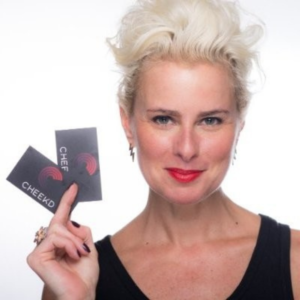
Lori Cheek
I’m an architect by training that one day had a light bulb moment. This moment led me to leave my safe and secure $120,000 per year job and career to build an online dating business I called Cheekd. When I launched in May of 2010, I “did it right” by putting the trademarks, technology, and patents in place to ensure I was protected. I also had partners and strategists, not to mention my own grit and passion as a foundation.
One of the greatest opportunities of my life came when I had the chance to pitch my startup Cheekd on an episode of Shark Tank. But that day has also put me in the cross hairs of someone who watched a re-airing of that episode in July 2015.
Two years later, that same individual named me in a $1 million lawsuit that claimed he “invented” the idea behind my company, while also accusing his former therapist in the same lawsuit of sharing his alleged invention with me. The catch is that the therapist and I have never met and had never spoken and did not know of each other until this lawsuit.
And despite this fact – and despite my having conceived of and commenced building the business before he even began treatment with the above referenced therapist – it took over 10 months and $50,000 to get the case in front of a judge who dismissed the lawsuit in a pre-trial conference on April 5, 2018.
Back? Well here’s where it gets crazier. Because without reproach, the same individual whose case had already been thrown out less than one year ago, has now tendered a second lawsuit against me containing the same allegations! Such is the Kafka-esque world that I’ve found myself thrust into.
So like a terrible movie that keeps generating sequels no one ever asked for, he came back. This time, the stakes skyrocketed into a brand new $5 million lawsuit against myself, my business and the therapist. The suit also requested inventor’s rights to my patent! Further, he asked not only for a “cease and desist” order for Cheekd, but also for our startup business spinoff Networkd, a Bluetooth networking app.
Fortunately, the judge dismissed the $5 million claims, but I was still forced to fight the inventor rights issue. I found myself again fighting to protect all that I have created over the past 12 years by spending over $114,000 that I do not have in order to save what is mine.
After nearly 2 years and 7 months defending my idea, my business and my patent in 2 back to back lawsuits, on December 23rd, 2019, Honorable Judge Englemayer directed the Federal Court of NY to enter judgement for the defendants (ME!) and to “close this case” as “no reasonable juror could find that he is entitled to be listed as a joint inventor.”
After a series of procedurally complex twist and turns that resulted in an agreement by plaintiff to not oppose defendants’ motion for summary judgment, U.S. District Judge Paul A. Engelmayer (S.D.N.Y.) granted defendants Lori Cheek (me) and Cheek’d Inc.’s motion for attorney fees under 35 U.S.C. § 285 and ruled that plaintiff’s counsel should pay. On May 26, 2020, defendants submitted their fee application seeking $17,000 for fees and the judge granted us these fees but the plaintiff’s counsel has appealed the judge’s decision so ultimately, this could take another year and cost another $17K to fight off the $17K this lawyer’s meant to pay back.
The story gets a little crazier because the plaintiff sued me a 3rd time for going to the press while trying to bring light to what was happening to me in hopes of trying to get my story in front of someone/ anyone that could help financially or legally… he sued me a 3rd time for defamation and all sorts of other claims in a $10Million lawsuit.
His current lawyer dismissed the lawsuit without prejudice which means the plaintiff can try again. I’ve done everything in my power to keep my business afloat over the last decade but I just can’t see the light at the end of the tunnel fighting this battle with a complete and total stranger that I still have no idea what looks like to this day.
Last spring, this lawsuit came to an end— after almost four years. The lawyer had to pay me a small portion of my legal fees for ‘vexatious conduct’ in the end. I’m still out over $100K in the end but it’s over and I can begin to rebuild now…
There’s my story. And what could help??? Our US legal system is not protecting businesses from frivolous lawsuits. From my conversations and investigations, it is clear that these types of frivolous lawsuits are epidemic and even the best PR support, strategic advisors and board of directors cannot help overcome.
And while an employee of a company is protected, someone who boldly follows their own vision and chases their own dreams is virtually unprotected from the absurdity of lawsuits claiming that your idea is not actually yours.
As far as my current app (a Bluetooth app) that is meant to help singles connect in real space and time– within a 30 foot radius in bars, cafes, at the gym, etc… Now during this time of social distancing, the beauty of our app has become obsolete… hence the need to evolve.
A New Yorker of 25 years, I recently relocated (due to the above financial reasons) to my home state of Kentucky and am working on a new app idea inspired by my own struggles trying to network and meet new people in a new city during an extremely unsocial time of purposefully distancing.
My solution will allow users to have a more organic, yet virtual way, of making connections for anything from business, networking, dating, fitness, friendship, hobbies or anything with anyone all over the world!
It’s a big brand new start for me in so many ways… and my dream plan for 2022 is to launch my new dream inspired by this dreadful pandemic.
My favorite quote that keeps me fueled every day of my entrepreneurial journey::: “You just can’t beat the person who never gives up.” – Babe Ruth

Charmaine Allen
BLOCKING OUT THE NAYSAYERS
When you first start a business you are ridiculously overenthusiastic. However, as you progress and you are constantly bombarded with problems or setbacks the doubt begins to creep in.
At the beginning of your entrepreneurial journey, you can find yourself going weeks and sometimes months without clients or sales. When you have this situation exacerbated by the naysayers it’s normal for doubt to start to set in. My advice to entrepreneurs in this situation is to find yourself a seasoned entrepreneur as a mentor who can help you navigate the various stages in your entrepreneurial journey.
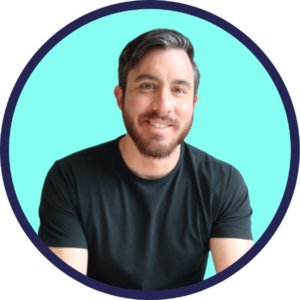
Jake Hare
The greatest challenge was not realizing how important sales and marketing was when I first started out. I had the belief that if I just built a good product or offer that people would find it and flock to it, and I could sit back and relax. That thinking caused 2 years of frustration, thinking to myself, “We have a great product and offer, and all our customers love it, so why isn’t our balance sheet reflecting that?”. Once I realized how important marketing and sales were, and that without being an expert in those things, I dedicated 100% of my time to learning how to be a scrappy marketer, specifically related to copywriting and traffic generation. Once I did that, the business grew exponentially, and we went from me working in a room above my garage to a team of 12 and growing. The advice I give entrepreneurs now is that if they want to start a company, they better learn how to generate traffic and get conversions before they spin their wheels focusing on their product.
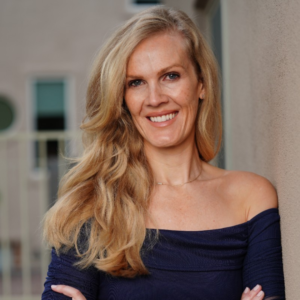
Andrea Sok
So many new entrepreneurs that I work come to me after diving into marketing their business without a strategy in place. They may have a decent budget, but they don’t see the results because there is no plan! Spend time mapping out your strategy.
What are your goals? Who is your customer? What is your budget? If you start with those three basic questions you can begin to map out a strategy. Also, seek help! A Fractional CMO is a great way to get the executive level strategy and implementation without busting your budget.

Julia O’Mara
One unexpected challenge that I’ve faced while starting Pickle is determining the ideal target audience and most effective marketing messaging. It is very easy to fall for the “if you build it they will come” fallacy, but at the end of the day an inferior product can win market share through superior marketing.
I’ve learned an incredible amount in this space and am continuing to learn what the best strategies are to present Pickle. My recommendation to new entrepreneurs would be to make sure they are focusing on the marketing aspects just as heavily as the product portions of building the business and to make sure they have a marketing strategy in place prior to launch and are ready to adapt as they measure its success.

Deb Porter
Honestly, had I known I might not have started at all—so maybe it was for the best that I didn’t know…nevertheless.
I very naively believed that all it would take to be successful was an announcement to friends asking them to share and we would have clients. I did NOT know that it can take 23 touches before someone decides to buy a product or service. I have since learned this is a very common mistake of new business owners.
This led me to scramble to find mentors, and it required grit to continue believing HOLD’s service is valuable and needed in the world. One mentor, Rod Jorgensen, a connection through the SBCA, suggested that my business is unique—that is both the greatest weakness AND the strength.
I heard him, and I have been using that leverage to write articles and speak on Podcasts. I allow people’s natural curiosity to propel both my story and the goal of HOLD, to “Mr. Rogers” the world. Another mentor, Renee Taylor Plain, who volunteers her time at the Adams Hub for Innovation, has been given me invaluable counsel teaching me the basics of marketing–I do the work, but she helps me see what’s next.
I have gone from knowing nothing about marketing, (because really–you can’t count the grade school assignment to make an ad) to confidently identifying and sorting evergreen content, and using a customer avatar to adequately target my ads. I even understand what “brand” means thanks to her. As soon as you stumble on something you don’t know, find a resource or a person to guide you.
I have also kept an open mind, and pursued any and all ideas that came to me, quickly choosing the best way to implement them so that I didn’t get bogged down in my perfectionism or fear. Further, I have a mental image of pouring concrete into the whack-a-mole game to stop negative thoughts. I have learned to ask myself the question, “What is going right?” multiple times a day, and let the positive reframe of that propel me forward.
I have so much joy because I jumped into the unknown and took the risk to bring what I saw in my imagination to life. I hope you do too!

Art Shaikh
The biggest challenge that I didn’t expect when I started CircleIt was the amount of investors that wanted to own part of the company. There are plenty of startup incubators out there that promise the world to new founders, but they don’t tell you that they want to take 10, 20, or 30% of the company in return. I worked two jobs and created my own seed money to avoid this problem, because eventually, the company wouldn’t have been mine. I think that’s the best advice I can give any new entrepreneurs
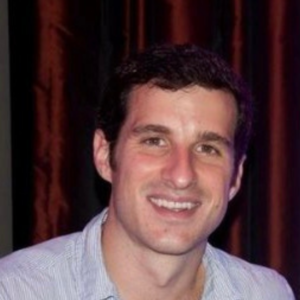
John Gardner
The biggest challenge is not finding leads, it’s converting them into paying customers and keeping them on. The problem with the fitness industry is not providing a great product or service, the biggest challenge is convincing your potential users, even though they already know how important fitness is for your health, to actually start heir fitness journey.
Tapping into a users brain and trying to change their habits while they already know what’s best for them and still come up with excuses of why not to exercise isnt an easy task. It takes a lot of pcychk analysis, studying human behavior and finding a mix of health benefits with other benefits that will resonate better with the consumer is a challenge.
We’ve come to realize that user-geenrated content is highly appreciated by potential consumers as it comes from someone who was in their exact position, understanding their struggles, fears and insecurities showing incredible results just by finally taking a step. User generated content has the ability to persuade consumers, trust in the service/product being provided and boost sales like no other.

Nandini Sharma
Entrepreneurs face a range of challenges at one time or the other. Things are tough when starting a business, but even when you have a well-established business, you can run into some unexpected obstacles.
As an entrepreneur, there are some challenges you are mentally prepared to face (shortage of resources, potential losses, failing to hot set sales goals, red-tapism, etc,), and then there are those issues that spring out of nowhere when you least expect them to.
These unexpected challenges make you think out of the box because you had not anticipated them in the first place.
For me, the biggest unexpected challenges came in the form of attracting the right talent, building a results-driven team of individuals, and then retaining your top performers.
Organizations across various industries make every effort in the book to hire the best people. It’s not easy to hire the right people when they are offered attractive incentives by other recruiters. And what makes the task even more challenging is that more people prefer to work for companies that offer them the flexibility of remote work.
I have personally conducted interviews with many candidates and found that they have as many questions as you have as an employer! You have to make them understand how they’ll benefit and grow by joining your organization not just professionally but personally too.
Once you have a dedicated bunch of people working for you, keeping them together is another great challenge that you have to tackle. When people with varied personalities, working styles, and cultural backgrounds work together, there are high chances of conflicting opinions and misunderstandings.
If you don’t control minor issues early on, these can quickly turn into major conflicts. So, I make sure that we regularly organize team-building activities, like team outings, games, and fun events. Such events help team members know each other well and understand others’ way of working.
Now, moving on to employee retention. Again, retaining your top performers is an uphill task as your competitors try to lure them with seemingly lucrative job offers. When your best performers leave, it does impact your business’ productivity and it can take some time to find the right replacement.
I regularly hold one-on-one conversations with the most talented lot of my organization to understand if they are facing any bothersome issues at work. This gives me an opportunity to find the cracks early on. I listen to their problems and if something needs to be fixed from the organization’s end (unrealistic deadlines, excessive work pressure, bad employee behavior), we resolve it soon.
This approach also helps our employees feel that their opinions, problems, and ideas are listened to carefully and acted upon, if required.
I hired the right people who worked tirelessly as a cohesive team to nurture a dwindling startup and turn it into a flourishing business. So, I try my level best to retain our best performers and I can brag that I have succeeded in it!

Greg Friedlander
One of the biggest unexpected challenges in business is, ironically, one that a lot of aspiring entrepreneurs create for themselves. They know they want to be a CEO, and they start there, identifying an industry that aligns with their expertise or passions, and launching a business.
Few, however, plan in advance for (rapid) growth. Not considering this possibility can lead to structural issues in the foundation of your business that will haunt you for years to come and hold you back in times that demand innovation.
The best way to avoid this problem is to plan ahead for all growth possibilities — slow, moderate, and rapid. When I first founded my business, I definitely didn’t fit the mold of a typical CEO — owning a business was never my plan. I have always been a very competitive person, and I saw a way to disrupt the talent booking industry.
By first focusing on people (our team and our clients) and then leveraging the power of technology (via the internet initially, then by building our own proprietary software that we use every day) we’ve been able to grow faster than many other companies in our market.
Two years into a pandemic that hit the event industry particularly hard, and amidst abysmal hiring and retention statistics, our company is breaking records, minimizing turnover and continuing to grow our team. All of these metrics speak to the power of building a scalable foundation based on disruptive ideas.

Chris Gadek
We were struggling to grow our business past a certain point. We found that we had plateaued and needed an extra boost to build greater brand awareness, so we turned to digital marketing. However, digital marketing can be a fickle friend as it’s challenging to find consistency in the results.
Some months we’ll perform really well and others we won’t. While digital marketing is now a critical part of our overall marketing strategy, we primarily focus on SEO. And working with a digital marketing agency helps increase the number of backlinks to our website. Whether through articles, guest posts, or digital PR, strategic link building creates a network of websites connected to your home, blog, and inner pages.
Having lots of other sites linking to yours builds awareness and authority for your brand, which boosts consumer trust in your business. Backlinks also drive more visitors to your website, leading to greater conversions. While digital marketing agency fees can be pricey, the return on investment is worth it.

Henry Bell
Though it’s hard to imagine, founders of a startup, the very individuals who worked tirelessly to turn their vision into a company may be adding to its difficulties. Despite their best efforts, the company’s founders will not be able to do everything on their own.
And even if they could, it’s not something that should be allowed to go place. It’s more than simply a matter of time, it’s a matter of expertise. Good leaders are aware of the limits of their own knowledge and abilities.
A great developer, for example, does not always mean a terrific salesperson, or even a great financial manager or an expert in human resources management. Avoid assuming you can do it all on your own as a startup entrepreneur. Distribute the effort and the responsibility for big choices rather than keeping them entirely to oneself. Fill up your knowledge gaps by hiring other CEOs and listening to what they’ve got to tell.

Gerrid Smith
The absence of guidance
In order to take your product to the next level, it may be that you lack the appropriate advice, market experience, and/or expertise to do so. In order to cross such obstacles, you’ll need a mentor, someone who has the experience and confidence to guide you.
One of the most helpful things you can have when making big decisions is someone to bounce ideas off of who has been there and done that. As a result, not all students will have mentors. Find inspiration from inspiring entrepreneurs you respect via books, articles, or podcasts if you don’t have the opportunity to meet them face-to-face. Focus on expanding your professional network while you’re at it.
It’ll come in handy later on. As soon as you reach the top, use your own hard-earned expertise to help others in need. We’d love to hear about your startup experience now that we’ve disclosed some of our biggest hurdles. Is there anything in particular that you’ve had to overcome as a new company? What were your methods for dealing with them? Please let us know in the comments section.
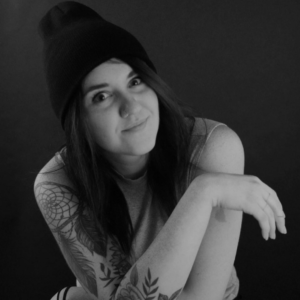
Laura Schaack
One of the greatest challenges in starting Tattd was hiring and managing my first employees. I’d managed teams before but it’s so different when you’re hiring the first or second employee that’s having to help you build from the ground up.
It’s such a delicate balance to find someone that not only has a great skill set but also has the commitment and endurance to push through the rockiest of times. When you’re hiring, absolutely prioritize that quality over anything else that an employee brings to the table, otherwise you’ll have to be dealing with turnover during the most important, high-stakes time of your company’s growth.

Mark Daoust
The biggest unexpected challenge we have faced is tackling our administration needs. Our business is fully remote with employees all over the world, and bookkeeping, keeping track of costs, purchases and sales are necessary and unexpectedly time-consuming.
Adequate bookkeeping is vital to keep the cash flowing. We now have a payroll service that helps take care of our needs, and we have been on top of adopting new technology, which helps us focus on time with our clients rather than administrative tasks.

Gregg Cantor
We are a design – build construction and remodeling firm in San Diego California. Our projects have always been contracted at a fixed cost with our customers who are homeowners.
The greatest unexpected change we faced in our business is the supply chain issue that caused shortages, major shipping delays and huge price increases. At the same time, the municipalities who issue building permits become backlogged causing the process twice as long.
We had to pivot quickly by securing labor and materials much earlier, even before we have permits, to minimize the additional cost to our customers. This type of business challenge is impossible to anticipate. As a new entrepreneur, I recommend having regular communication with your customers and being transparent. It makes all the difference in the world!

Vimal Patel
The greatest challenge we faced was with the lender – post covid with a CMBS loan, you are still obligated to pay a monthly mortgage and there is no person like a local bank manager that you can talk to, and explain your situation – so we defaulted and we came in real danger of losing our asset, our hotel. In this kind of scenario the owners have to ensure they have enough line of credit or loan available – whether there is a natural disaster or covid, you have to be able to self sustain and meet your obligations – so either don’t do it – don’t go with a CMBS loan or make sure that you have enough reserves at your disposal.

Admir Salcinovic
Due to the pandemic, there’s been a shift in focus to essential products. Over the last couple of years, a lot more people discovered how well they enjoyed staying at home while executing DIY home improvement projects which skyrocketed across world.
This shift in focus led to increasing prices of products. More people are now cooking in their homes, spending less on luxury, and spending vacations around their community. The question is “What if you don’t sell essential products? “. It is important for your sales team to identify ways to approach customers and convince them of the necessity of the products you offer. Creating Buyer Personas and understanding their psychology takes priority today, more than ever.
A lot of customers express increased comfort with technology today, compared to the pre-pandemic period. As remote work policies are implemented across numerous industries and workplaces, a lot of people work from home using technological devices like laptops and desktop systems.
They’re savvier about the significant number of identity theft attempts and expect your brand to make security and compliance a priority, protecting their precious information. Embrace new technologies as they arrive and invest in the ones most likely to benefit your users. Look for ways to make the sales funnel run more efficiently for your users.
Employee churn is always a problem for companies. You spend money, time, and effort recruiting and training the best staff you can find. You pour resources into making sure they have the latest skills in your industry. Unfortunately, they often choose to leave for better prospects.
You may not be able to compete with the salaries of the large corporations, but you can offer perks they can’t, such as a family-like company culture, remote work options, and causes they can get behind. Talk to your workers about the things they’d like to see implemented and start the programs you’re able to offer. The more your staff loves their jobs, the more likely they are to stay and not bounce to a competitor.


